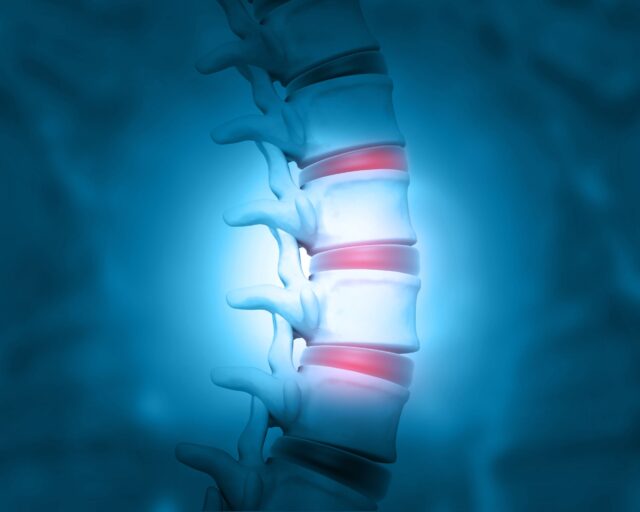Discography
Provocative discography is a diagnostic procedure in which contrast (x-ray dye) is injected into several discs of the spine. You will report the sensations that you feel during the injections. X-rays are taken after the injection to see if there are any tears or leaks of the spinal discs. You will be sent for a CT scan of your back after the procedure to get a detailed picture of the dye in your discs to specifically locate any tears. These results are then used to determine if you may be a candidate for surgery or IDET (intradiscal electrothermal annuloplasty,) or whether your spinal discs are the source of your back pain.
Download our printable information sheet.
Frequently Asked Questions
Provocative discography is performed to determine if your back pain is coming from your spinal discs, and if so, which spinal discs are causing your pain. If a painful disc is located, we can also locate the tear to plan treatment.
During provocative discography, you will feel an ache or pressure in your back with the injection. If this pain reproduces your normal pain, then the disc being injected is most likely your normal pain generator. Back pain can be caused by many sources, therefore, provocative discography is a diagnostic procedure to verify or eliminate your spinal discs as the cause of your back pain.
If your pain is in your low back, you will be laying on your stomach. If your pain is in your neck, you will be laying on your back. You will be monitored with an EKG, blood pressure cuff, and pulse oximetry. You will have an I.V. and light sedation will be given. Your back will be cleaned with an antiseptic soap and you will have drapes placed over you. Your skin will be numbed through a needle with numbing medicine. During the injection into the disc, you will be asked where you feel pain, if any, and if this pain is the same as your normal pain or different. This procedure will be repeated for several spinal discs. After the procedure is finished, you will be sent for a CT scan to get a more detailed picture of the spinal discs injected.
If your spinal disc is not torn, you will feel a pressure sensation as the disc is injected. If the disc is abnormal, you will feel pain with the injection. You will notify your physician what you are feeling with each injection as well as the location and intensity of the pain. You will also state whether this pain is your usual pain or a new pain.
Depending on your MRI and where your pain is, we will select several discs to be injected. At least one normal disc will need to be injected as a control sample.
Depending on how many discs there are to be injected, the procedure can take 30-60 minutes.
The discs are injected with a mixture of x-ray contrast (dye) and antibiotic to prevent infection.
No. The safest way to do this procedure is under local anesthesia. You may choose to have intravenous sedation, which will help you relax, but you will always be awake during the procedure to minimize the chance of any nerve damage. During the discogram injections, you need to be awake enough to tell the doctor what you are feeling.
Provocative Discography is a diagnostic procedure to locate the source of your pain and the anatomy of your spinal discs. It is not designed to treat painful discs. You may feel that your pain is more aggravated with a sore back after the procedure.
After the procedure, you will receive a CT scan of your back. We recommend that you limit strenuous physical activity the day of the procedure. You will bring someone with to drive you home the day of the procedure. There is absolutely no driving the day of the procedure. You may go about your normal daily activities as tolerated excluding strenuous physical activity.
After provocative discography, your back will generally be sore for 2-3 days. You will be able to return to work as tolerated with usual activity levels.
Overall, the procedure is very safe. As with any procedure, there are risks. The most common side effect is pain, which is temporary. Any time a needle is punctured through the skin, there is a chance of bleeding or infection that is very rare. Other rare side effects include spinal headache, nerve damage, worsening of pain, etc., which are extremely unlikely. You may feel a temporary electrical sensation go down your extremity if the needle brushes past a nerve root. This generally goes away after a few seconds and the needle is redirected.
If you are allergic to specific local anesthetics or ionic contrast, please notify your physician. Also, if you are taking any blood thinners (Coumadin, Plavix, Warfarin, Lovenox, Aspirin) please let your physician know ahead of time to help devise a safe plan for the injection.

